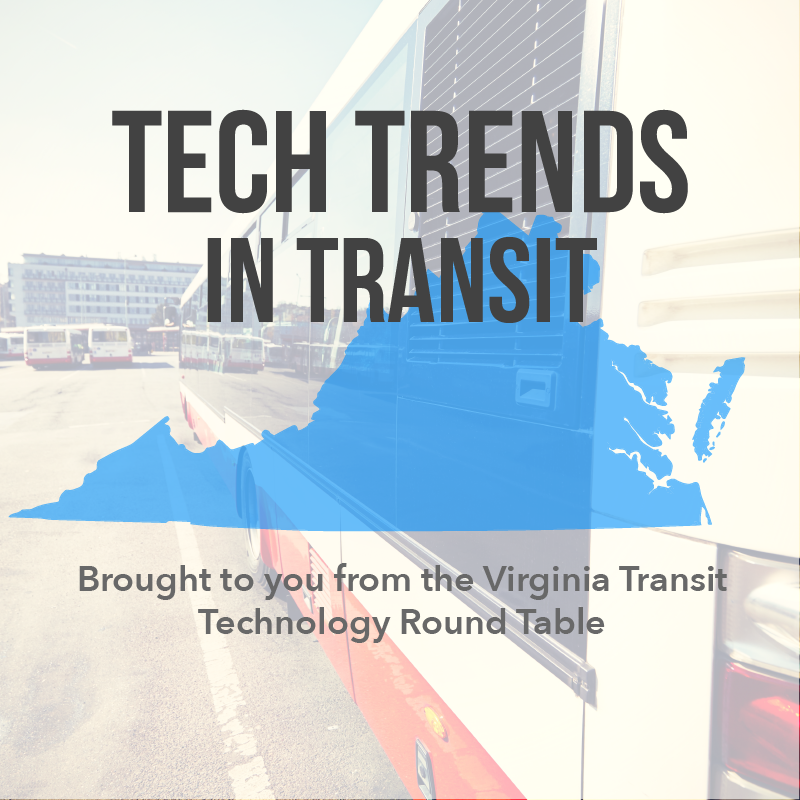
These days, it seems all you need to do is blink and the technology you’ve come to rely on has changed — and public transportation is no exception.
Last week, I attended the Virginia Transit Technology Roundtable hosted by the Virginia Department of Transportation (DOT). The Roundtable provided a unique opportunity for public transit agencies, researchers, and technology vendors to meet, network, and share their experiences in developing and implementing technology within the industry. During the Roundtable’s conversations, four themes continued to surface:
Policy is the link between innovation and execution
While transportation is 90% execution and 10% innovation, innovative ideas often receive more fanfare and attention. However, times are changing; innovators within the transit industry are now spending more time and money on execution and the policy behind it — and for good reason. Policy actually supports execution by linking innovation with the day-to-day. Transportation policy provides agencies with clear decision-making criteria, empowering them to operate and innovate with autonomy. In short, it’s critical for innovators to help define policy.
Technology is blurring the line between public and private
With Pete Gould speaking, it’s no surprise we had great conversations around Mobility as a Service (MaaS), public-private partnerships, and precedents in associated policy. (For those who don’t know, Pete Gould has worked for Uber, the United States Department of Transportation and U.S. House of Representatives’ Committee on Transportation and Infrastructure.) The ubiquity of smartphones means that mobile apps are, in essence, blurring the line between public and private transit providers. While this new ambiguity is creating exciting new opportunities to work together, like in the cases of Dallas Area Rapid Transit (DART), Metropolitan Atlanta Rapid Transit Authority (MARTA) and Pinellas Suncoast Transit Authority (PSTA). However, it’s clear that public and private transit providers still have a lot to learn about one another, particularly regarding the economics of their respective business models.
There’s more to measure than ever
Technological advances are making data and metrics more readily available to transit stakeholders than ever before—and decision-makers are reaping the benefits. From showing a complete picture of demand to providing a higher quality understanding of route performance, there’s more data available than ever before thanks to new tech. It’s worth noting that the confluence of technology, transit, and actionable data is pushing agencies to consider new key performance indicators, metrics, and benchmarks, particularly concerning response time and customer satisfaction.
Demand modeling is using your phone
While technological advances are making data and metrics more readily available, it’s also pushing the limits on demand modeling. Some of the most exciting research and technological developments mentioned during the Roundtable occurred at the intersection of smartphones and demand. For example, a team from the University of Virginia is working to model demand, cost and service impacts of autonomous electric vehicles. One new vendor is providing modeling software that illustrates the impacts of new student housing for universities and municipalities. All of these demand modeling tools and projects are predicated on smartphones as a data collection method. By using real-time and trip planning smartphone apps, public transportation riders are providing mountains of data about their choices, habits, and preferences. As a result, those in the transit industry are able to better prepare for future demands.